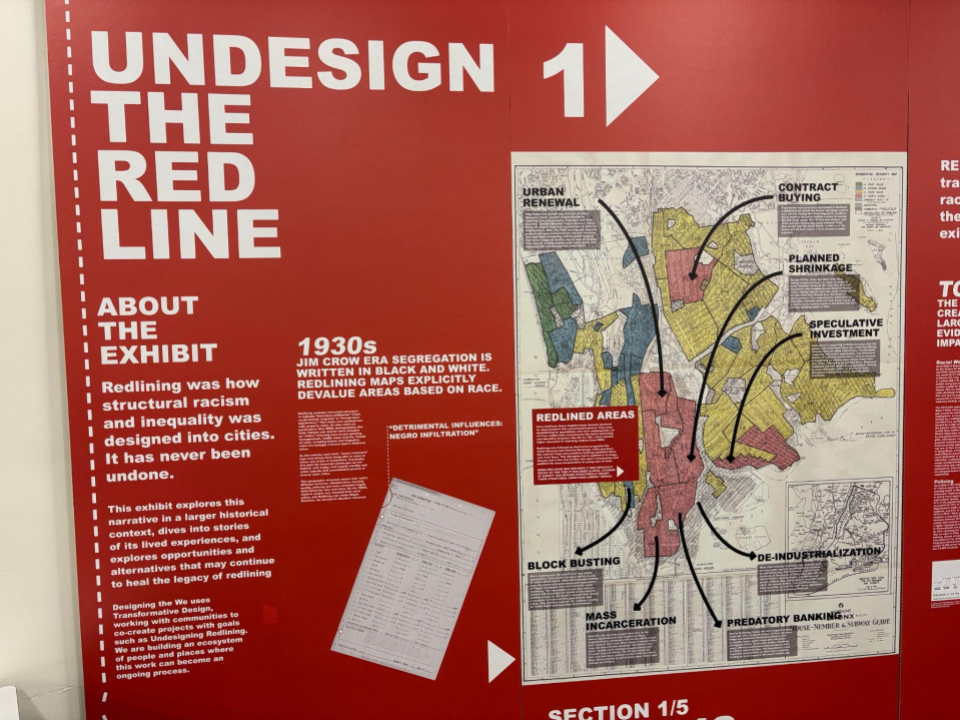In 1968, the Fair Housing Act was passed. This law prohibited the segregationist policy of redlining, a policy by which banks only allowed African Americans to purchase homes in certain neighborhoods. Redlining led to the segregation of whole cities, separated on racial lines. By the time the Fair Housing Act was passed, the damage was already done, even in Clevelandーone of the most segregated cities in the United States.
“Redlining was by design [and] designed to take away hope from people,” said Director of Campus Ministry, Kathleen Sardon, “It’s important to understand that our communities don’t look the way they do on accident.”
JCU has recently put up an exhibit revealing redlining’s history in the Murphy Commons at the “Undesigning the Red Line” exhibit. The exhibit features many speakers, and several events that anyone can attend will be on campus until March 6.
So far, the exhibit has been a resounding success. Speakers have headlined the events, including Shelli Reeves, who gave an opening lecture on Glennville, Cleveland, which in 1930 had a population of 8% African American and 90% by 1950.
In addition, so far 35 different classes have structured lessons and coursework around the exhibit including several high schools in the Cleveland area.
“The redlining event was extremely interesting and educational. I learned an incredible amount about the redlining of Cleveland,” said Patrick Beck ’28.
The purpose of the event, however, is not only to showcase what redlining is and how it is impactful but to focus on what can be done moving forward.
“We need to think about how we use the skills, talents, and expertise of a school like John Carroll to create a different future,” says Sister Katherine Feely, director of the Center for Service-Learning and Social Action. Feely added, “We need to target and address the structural issues that continue to create human suffering and prevent thriving.”
This exhibit has been a long time coming. “We saw the exhibit first at the YMCA in Cleveland over the summer,” said Feely, “We began working on it actively last May, we pulled together a committee and there was a fair amount of collaboration that had to come together for an exhibit like this.”
This collaboration has been a key factor in making sure the exhibit was put together.
“We’ve been meeting since September, [as] this is one of the most collaborative things that I have worked on” said Sardon. “We all were meeting every other week and in November we started meeting every week, it has been a lot of effort from everyone.”
Through strenuous labor and collaboration, the planning committee made up of members from: Academic Affairs, the Boler College of Business, Campus Ministry, the Center for Diversity Equity & Inclusion, the Center for Service-Learning and Social Action, the College of Health, the Time Russert Depart of Communication, the DEIB Office, the Grasselli Library & Breen Center and the Graduate Student Association brought the “Undesign the Red Line” exhibit to JCU.
This collaborative effort was not only extremely imperative to bringing the exhibit to JCU but also underlines the importance of collaboration in efforts to undesign the red line.


